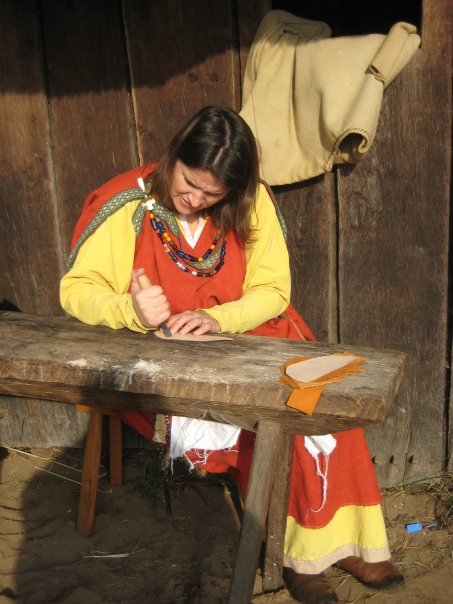
For resources to support this topic click here.
Who migrated?
The fall of the Roman empire led to Roman troops pulling out of Britain at the beginning of the 5th century AD. There are various legends about the migration period, when the settlement of Britain by peoples from the east began (e.g. Hengist and Horsa). Today we refer to the Settlement of the Britain by the Anglo Saxons as if they were one homogenous group, however different parts of Britain were settled by different people, originating form different areas of the French, Irish, German, Dutch and Danish coasts. These different peoples were the Jutes, the Franks, the Frisians, the Saxons, the Angles and the Scots. Each of them settled in different areas of Britain, giving their names to places with which we are now familiar. We live in East Anglia because the Angles settled here. The East Saxons settled in the areas we now call Essex. The modern counties of Sussex, Middlesex, Norfolk and Suffolk get their names in similar ways. The Scots, who give their name to the modern country, were relative late comers, pushing the Picts to the east, as they arrived from Northern Ireland in the 4th Century.
 As these peoples settled different regions, we find subtle differences in the dress and culture of the 5th and 6th centuries, mainly through the record left to us by archaeology. The pagan people from this period buried their dead with clothing and objects which marked their status, making the task of exploring the dress, religion and culture of this period particularly fascinating.
As these peoples settled different regions, we find subtle differences in the dress and culture of the 5th and 6th centuries, mainly through the record left to us by archaeology. The pagan people from this period buried their dead with clothing and objects which marked their status, making the task of exploring the dress, religion and culture of this period particularly fascinating.
Settlement
Initially the people lived in small groups of farmsteads, such as those which have been excavated and reconstructed at West Stow, near Bury St Edmunds, but the trade networks reached far into Europe and beyond and the wealth and status of a few from this period have given us treasures which surely give the lie to the term 'Dark Ages'. No one could look at the garnet encrusted treasures from Sutton Hoo, the burial place of the East Anglian King Raedweld (c570-624AD), and fail to be impressed by the skill and artistry of those who made them.
In the land we now call Scotland, there were several warring kingdoms: the Kingdom of Strathclyde, based at Dumbarton, (These people were from the same stock as the Welsh and Cornish), the northern and southern Kingdom of the Picts, the incoming Scots (who settled the western coast and isles of Scotland, these people spoke Old Irish, which formed into the Scots Gaelic, some poeple in these locations still speak today) and finally the Northumbrians (who regularly pushed their territory northwards, even so far as Dundee.)
In the land we now call England, the Anglo-Saxon settlements from this period formed into 7 kingdoms, often refered to as the Heptarchy. These are Northumbria, Mercia, East Anglia, Essex, Kent, Sussex and Wessex. There were many years of changing boundaries, intermarriage and conquer which established border which still influence the structure of our country today. The Anglo-Saxon kingdoms eventually unified into the Kingdom of England, but it took a common threat and the only king we still call 'the Great' to unite the country as we now know it.
East Anglia
During this period, East Anglia not only gave us the ship burial at Sutton Hoo, but also our greatest saint, St Etheldreda (c639-679AD), who established the abbey at Ely. She was a woman of the royal line of East Anglia and was first married to a local prince who gave her the land on which she built Ely Abbey. When her first husband died, she was married to a Northumbrian king who was less willing to accept her devotion to the church and so she made a miraculous escape back to Ely, where she became venerated so highly that, in the later Middle Ages, only Canterbury boasted more pilgrims each year. The story of Etheldreda gives us some fascinating glimpses into the establishment of Christianity in England.





